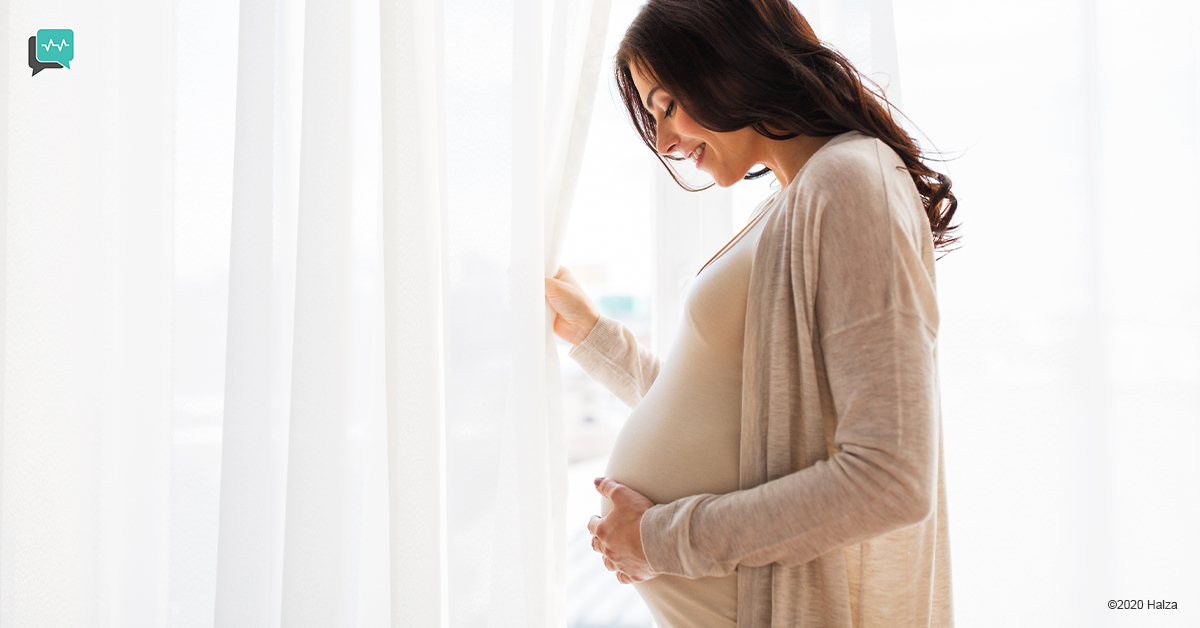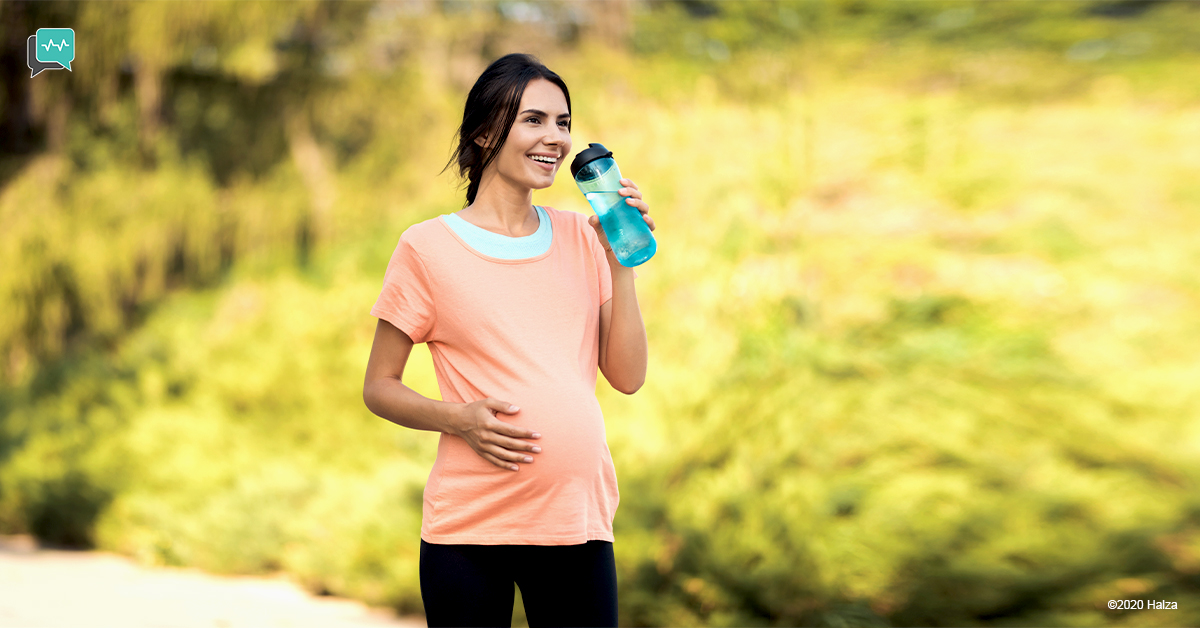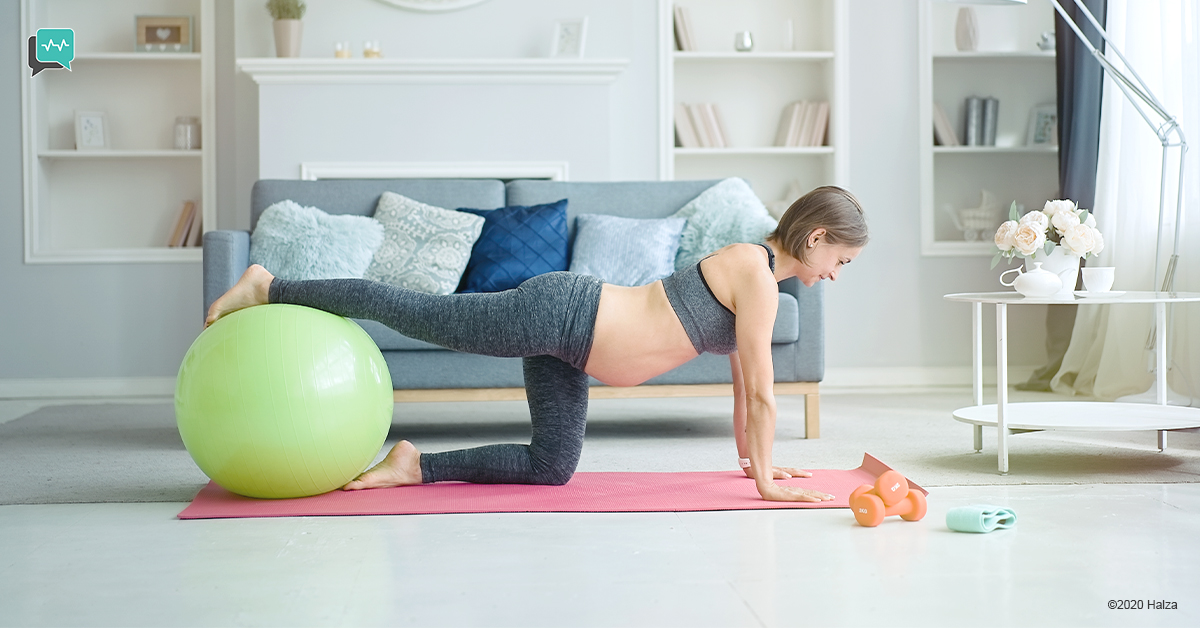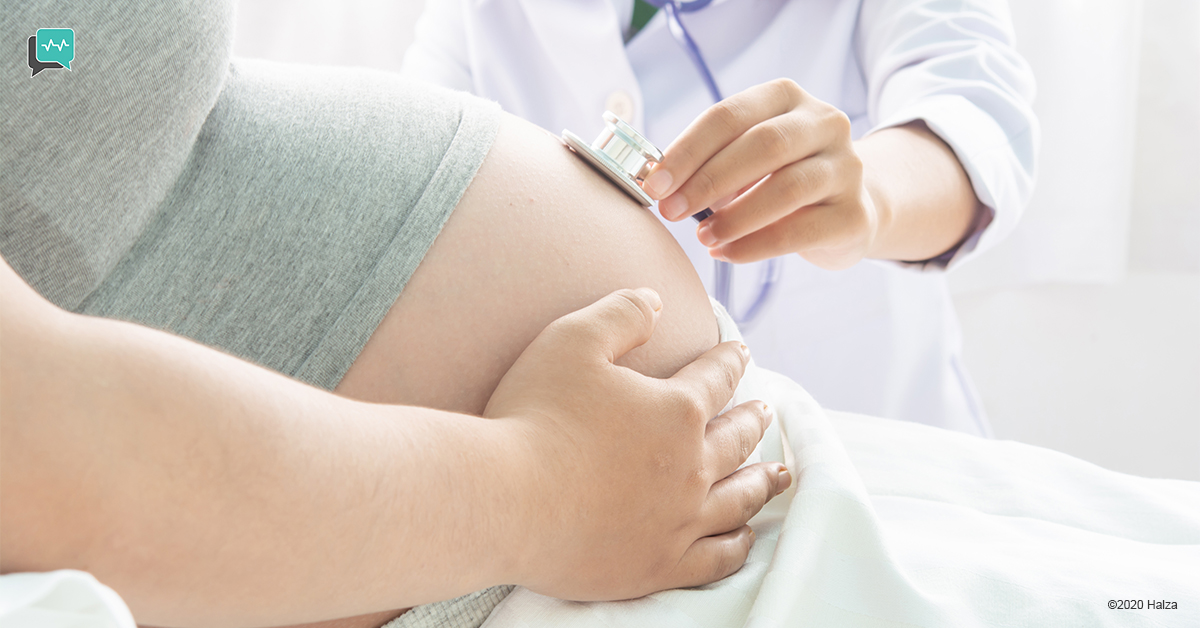A Guide to Exercising During Pregnancy

Exercising is good for your health and that doesn’t change, even during pregnancy.
In fact, given what pregnancy puts your body through, it’s recommended to get some exercise to help you build stamina and cope with the physical changes.
Why should you exercise during your pregnancy?
1) Keep your baby healthy
A 2019 study looked at 71 healthy and pregnant women and found that exercising during pregnancy positively influences the baby’s growth and allows for improved neuromotor development. The women gave birth to infants more adept in movement and more likely to be active, in turn reducing their risk of childhood obesity.
2) Prepare you for childbirth
In 2018, researchers conducted a study on 508 healthy pregnant women to examine the impact of maintaining an exercise routine throughout pregnancy on the duration of labor. They found that keeping physically active throughout pregnancy ultimately decreased the amount of time spent in labor.

3) Boost the benefits of breastfeeding
In a 2020 study, researchers have identified that even moderate exercise while pregnant can lead to the production of a breast milk compound linked to improved metabolic health and cardiac function. The compound, oligosaccharide 3’-sialyllactose (3’-SL), plays a critical role in fighting the development of obesity, type 2 diabetes, and cardiovascular disease in babies.
4) Reduce back pain
Back pain during pregnancy should be expected. As your baby grows, your center of gravity is shifted by your expanding uterus, which stretches out and weakens your abdominal muscles. Your posture changes, as a result, and puts a strain on your back.
Exercising can therefore help with strengthening and stretching these supporting muscles. It can also promote good posture and keep the muscles in your back, abdomen, hips, and upper body strong.

5) Lift your mood
It’s understandable if there are days during your pregnancy where you just don’t feel your best. If you want to get your mood and energy levels up, exercising may help. It has been shown to reduce anxiety and feelings of depression, as well as increase endorphins, which in turn brings feelings of happiness and reduces the feeling of pain.
Tip: Pay closer attention to your mood by tracking how you feel from day to day and logging this to see if exercise does in fact play a part in making you feel better. The Halza app’s latest feature – Pregnancy – allows you to do just this and more. Find out more here.
How much exercise do you need?
Ideally, you should get at least 150 minutes of moderate aerobic exercise a week, where you move large muscles like those in your arms and legs in a rhythmic way to get your heart rate up.

Examples of this include:
- Brisk walking
- Swimming
- Stationary cycling
- Modified Pilates and yoga
Splitting the 150 minutes into more manageable 30-minute workouts, 5 days of the week is recommended to prevent overexertion.
If you never exercised before getting pregnant, be sure to start out slowly, then gradually increase your activity. Begin with as little as 5 minutes of activity a day, then adding 5 minutes each week until you can stay active for 30 minutes a day.
If you were very active before pregnancy, you may be able to keep doing the same workouts with your doctor’s approval. However, you may need to increase the number of calories that you eat if you start to lose weight.
Tip: While heart rate limits aren’t typically imposed during pregnancy, tracking your heart rate helps determine the intensity of each workout you do. The Halza app lets you store and view your data from the palm of your hand, as well as securely share the data with your doctor in seconds. Learn more here.

What are some targeted exercises that help during pregnancy?
- Pelvic floor exercises
These help strengthen the muscles of the pelvic floor, a group of muscles at the base of your pelvis which come under great strain in pregnancy and childbirth.
If these muscles are weak, you may leak urine when you cough, sneeze, or strain. There is no reason to feel embarrassed as this condition, known as stress incontinence, is actually quite common and can continue after pregnancy.
How to do pelvic floor exercises:
1) Clench your bottom like you’re trying to stop yourself from going to the toilet.
2) Simultaneously, draw in your vagina as if you’re gripping a tampon, and your urethra as if to stop the flow of urine.
3) Do this exercise quickly at first, tightening and releasing the muscles immediately. Then do it slowly, holding the contractions for as long as you can before you relax. Try to count to 10.
4) Try to do 3 sets of 8 squeezes every day. To help you remember, try doing a set before each of your meals.
- Core strengthening exercises
Unless your doctor says otherwise, it should be safe to exercise your abs during your pregnancy with the proper modifications. In fact, this supports your pelvic organs as your baby bump gets bigger.
A strong core can also take some pressure off your back and support proper posture to prevent lower back pain, typical during pregnancy. It can help increase your sense of control during labor, as well as help you recover more quickly after giving birth.
How to do core strengthening exercises:
1) Start on all fours on your hands and knees, with your knees under your hips, and your hands under shoulders. Make sure your fingers are facing forward and your abdominals are lifted to keep your back straight.
2) Pull in your stomach muscles and raise your back up towards the ceiling, curling your torso as far as you can comfortably go, and allowing your head to relax gently forward. Do not lock your elbows.
3) Hold this position for a few seconds before slowly returning to the starting position. Remember to not hollow your back. It should always return to a straight/neutral position.
4) Do this slowly and rhythmically 10 times, making sure your muscles are engaged and you are moving your back carefully.
What types of exercises should you avoid?
If you were not active before getting pregnant, do not suddenly start on any strenuous exercise. Start slow and under the supervision of your doctor.
If you were an active individual before getting pregnant, there are certain exercises that should be avoided during pregnancy.
- Lying flat on your back for long periods, during crunches and sit-ups, for example, especially after your 16th week. The weight of your uterus will press on the main blood vessel bringing blood back to your heart and make you feel faint.
- Contact sports, such as kickboxing, judo, ice hockey, soccer, basketball, or squash, that put you at risk of being hit.
- Scuba diving while pregnant could be harmful to your baby as it offers no protection against decompression sickness and gas embolism.
- Unless you already live there, exercising at high altitudes (more than 2,500m above sea level) puts you and your baby at risk of altitude sickness.
- Activities that may cause you to fall, such as downhill snow skiing, water skiing, surfing, off-road cycling, gymnastics, and horseback riding.
- Hot yoga or hot Pilates may cause you to become overheated, which should especially be avoided in the first trimester.
Is there still a need to keep on exercising after giving birth?
Continuing to exercise may improve your mood and decrease the risk of developing deep vein thrombosis (DVT), a condition that women who have just given birth are at more risk of.
How soon you can start exercising depends on your pregnancy and delivery.
Following an uncomplicated pregnancy and a vaginal delivery, it’s usually safe to start exercising a few days after giving birth, when you feel ready.
Following a C-section, extensive vaginal repair, or a complicated birth, it’s essential to talk to your doctor about when it will be safe for you to start exercising again.
One last thing before you get started
Though exercising is beneficial for you and your baby’s health, this may not always be the case.
There are some conditions that make even moderate exercise unsafe.
These include:
- Certain types of heart and lung disease
- Cervical insufficiency or cerclage
- Being pregnant with twins or triplets (or more) with risk factors for preterm labor
- Placenta previa after 26 weeks of pregnancy
- Preterm labor or ruptured membranes (your water has broken) during your pregnancy
- Pregnancy-induced high blood pressure, known as preeclampsia
- Severe anemia

As you may not know that you have these conditions, you should always consult your doctor before starting on any exercise regiments, no matter how gentle you think they are.
If you take a class, be sure the instructor has experience training pregnant women and inform them of your pregnancy.
As with all exercise, remember to stay well hydrated. Always warm up before, and cool down afterward.
If you choose to exercise, it’s important to remember that you do not have to over-exert yourself for exercise to be beneficial. Listen to your body and stop when you feel light-headed, discomfort, or pain. Remember that, ultimately, you’re doing it for the health of you and your baby and that it’s ok rest when you need to.
How Halza helps
Halza is the innovative social-medical app, created to alleviate your health journey.
Introducing the latest feature – Pregnancy!
Get weekly insight into both your growth, as well as your baby’s, throughout your term and track your mood every step of the way. The feature also comes with a contraction timer, to help you measure the duration and frequency of your contractions and determine which stage of labor you are at.
Halza also comes with a variety of other useful features for the health of the whole family – find out more here!
Download Halza today!
Sources: PubMed – EJOG – Nature – NHS – Very Well Family – ACOG – Mayo Clinic


